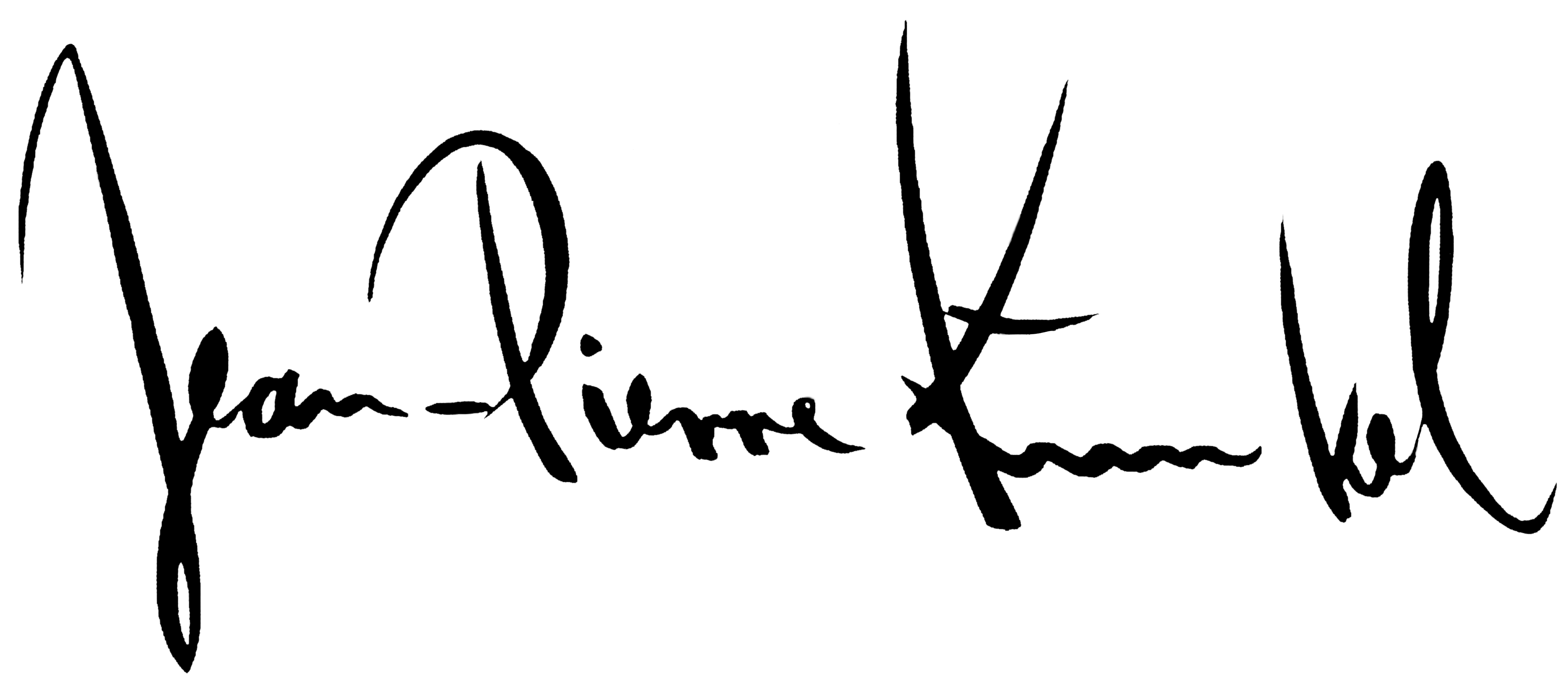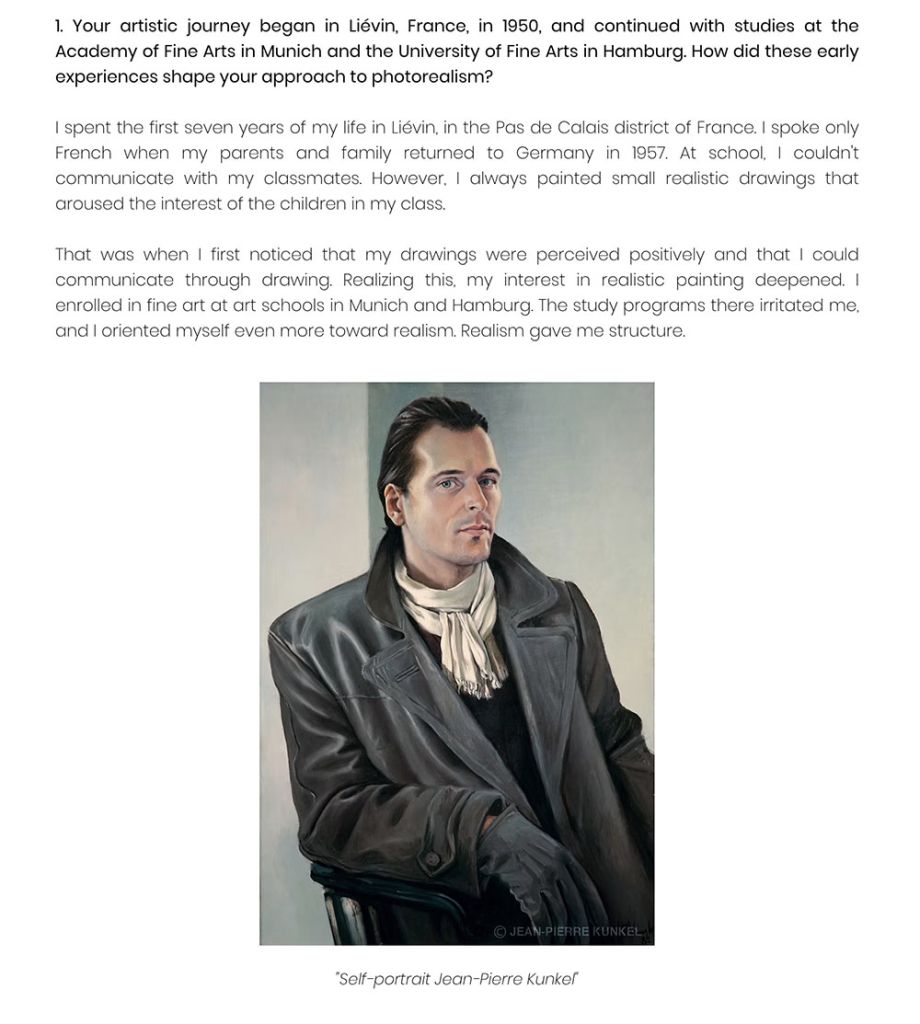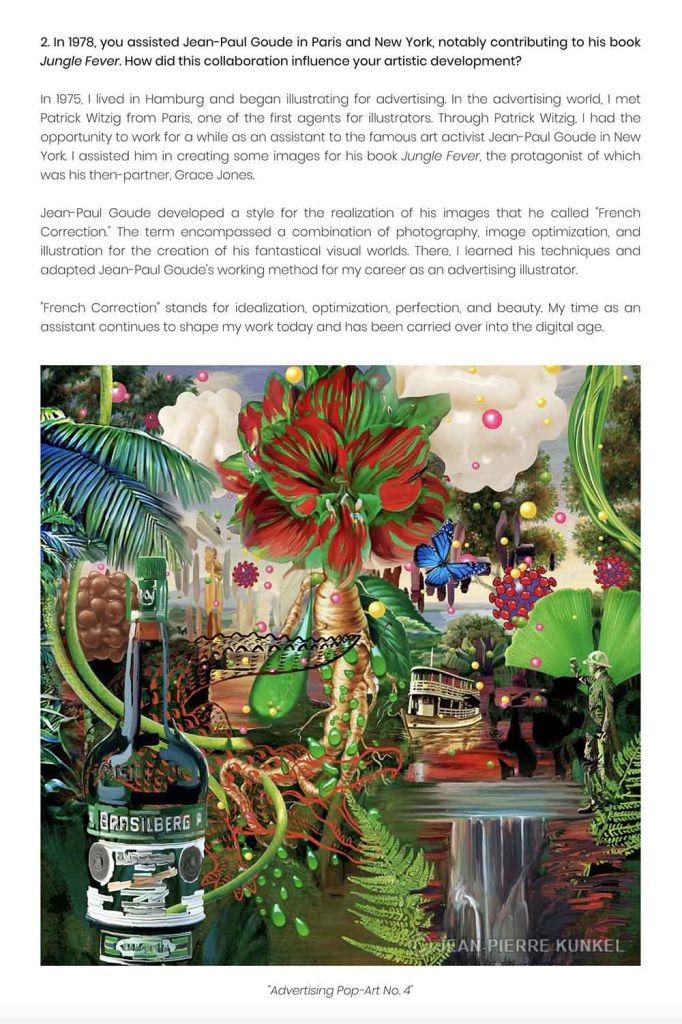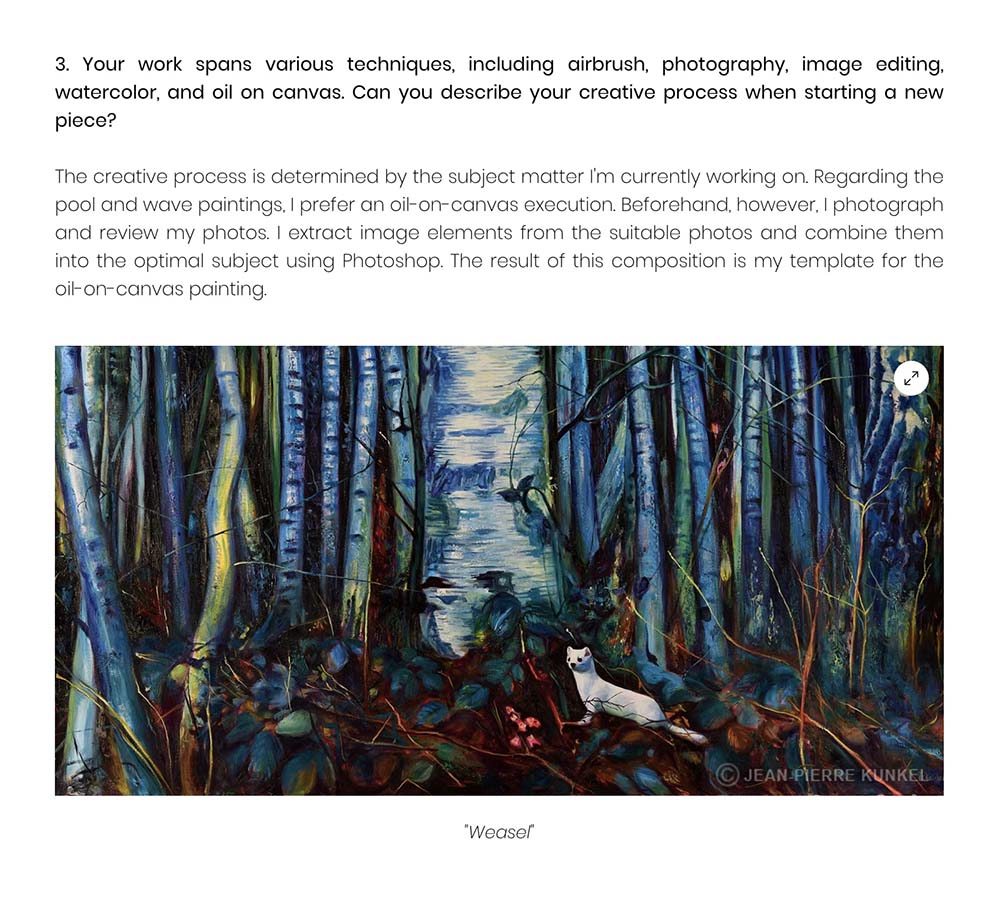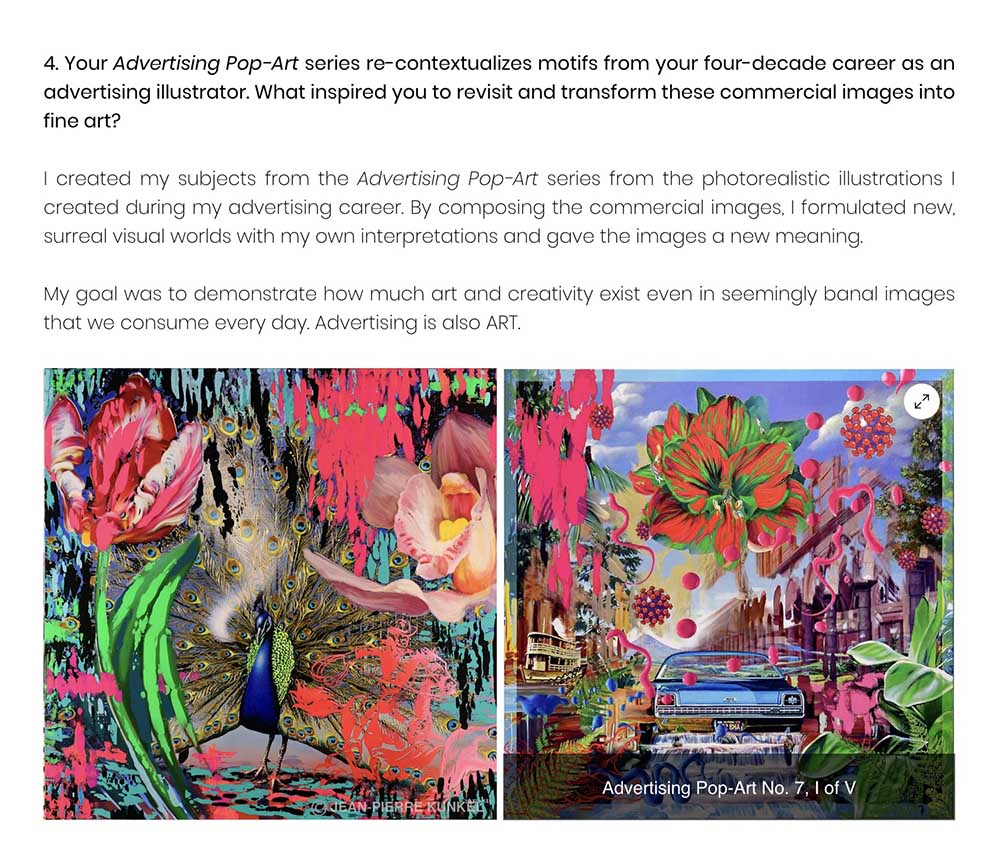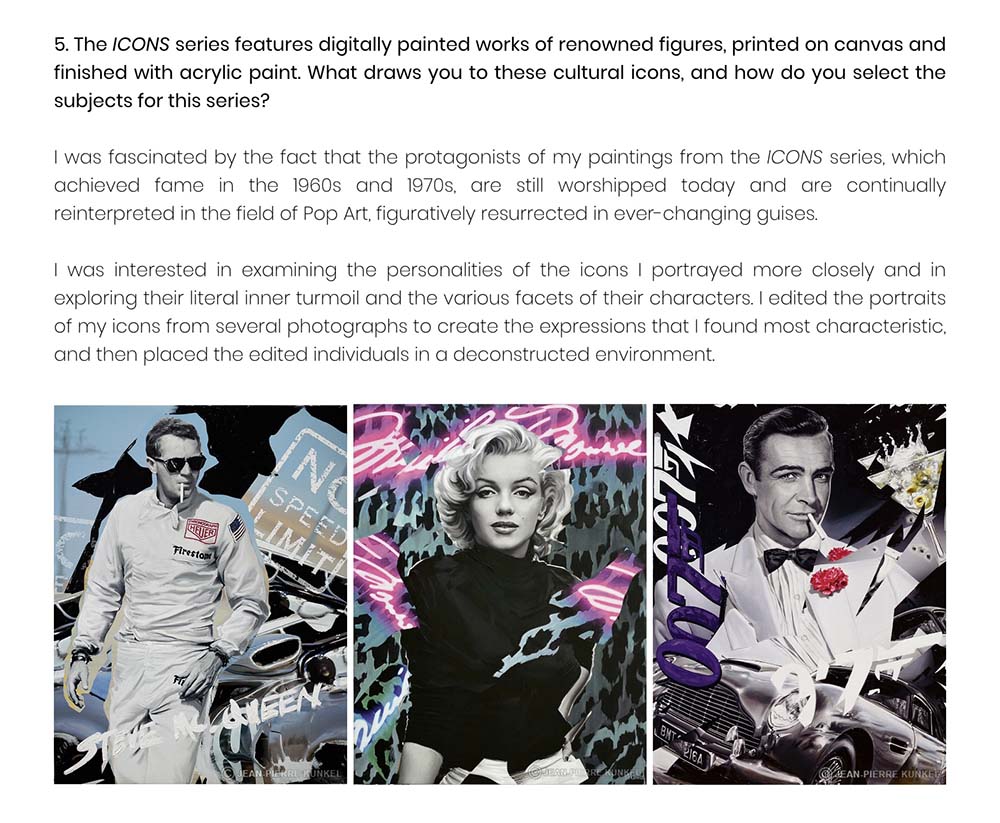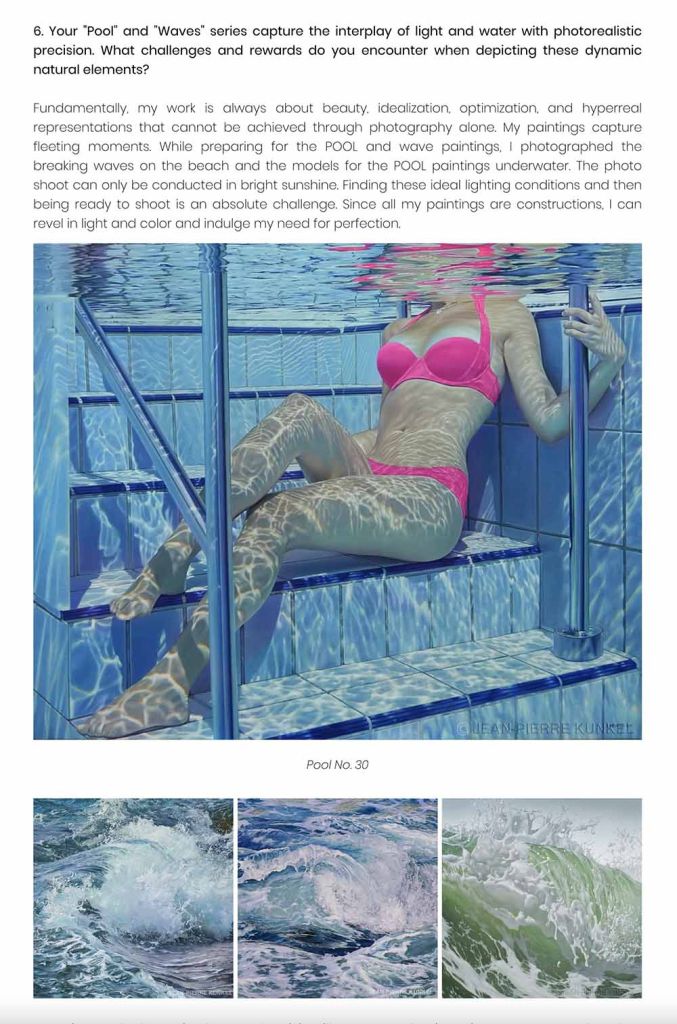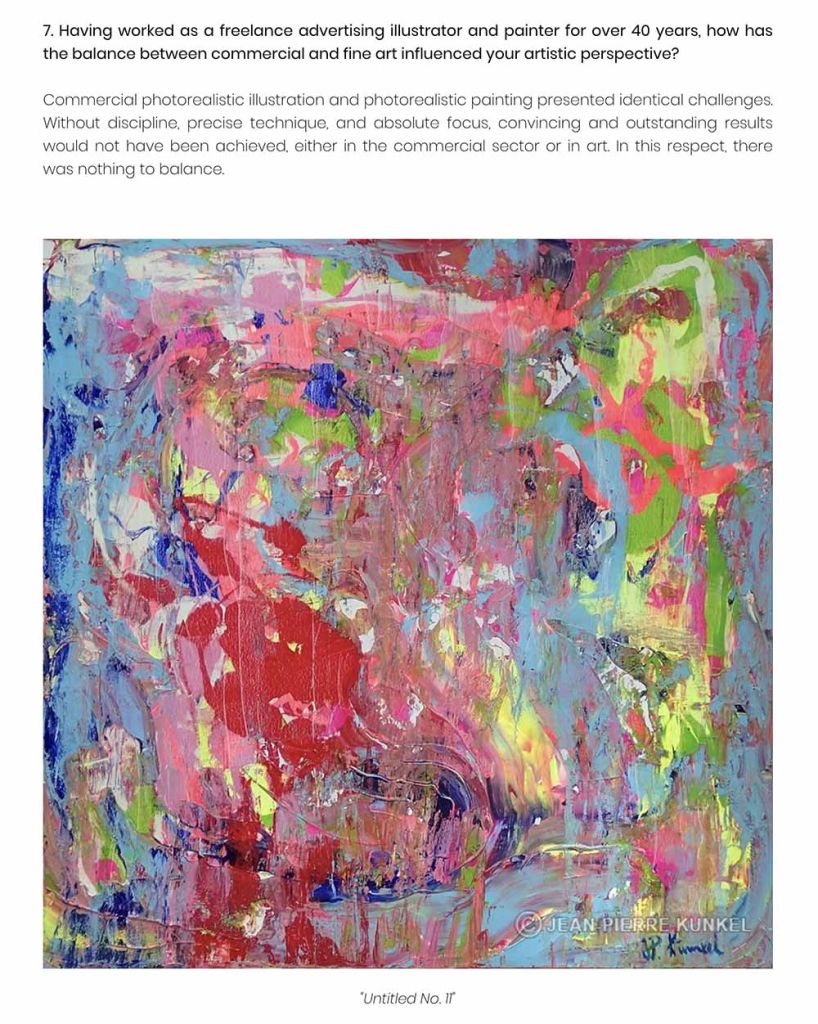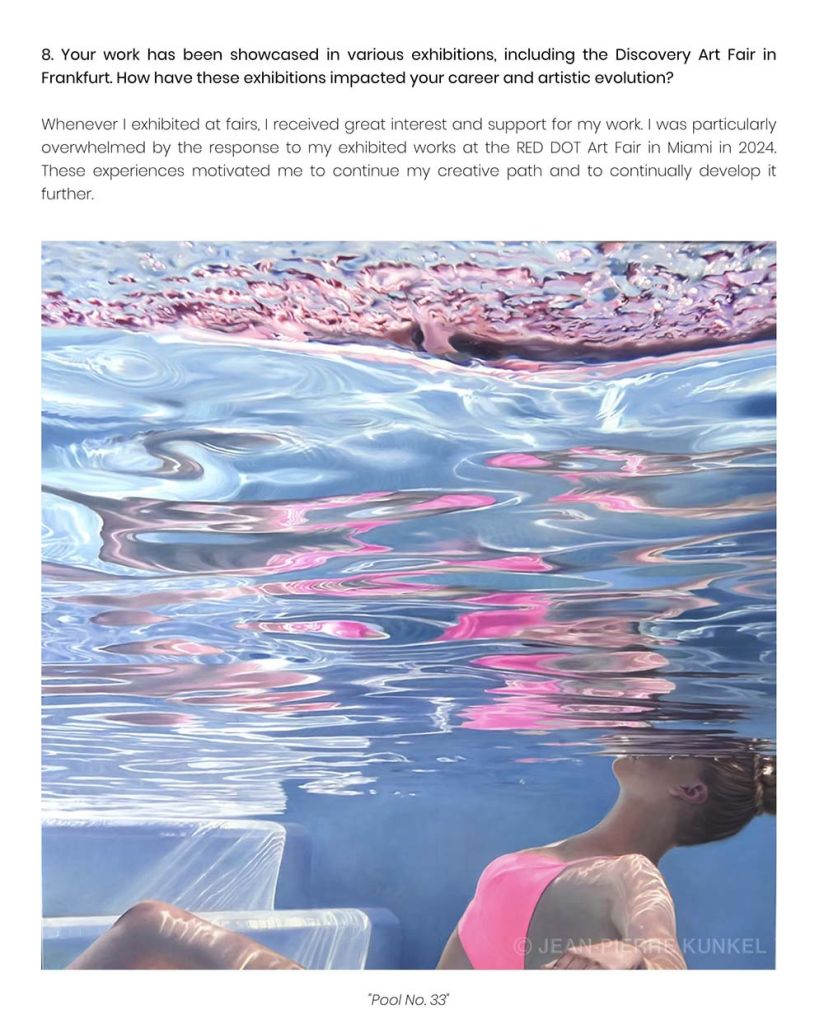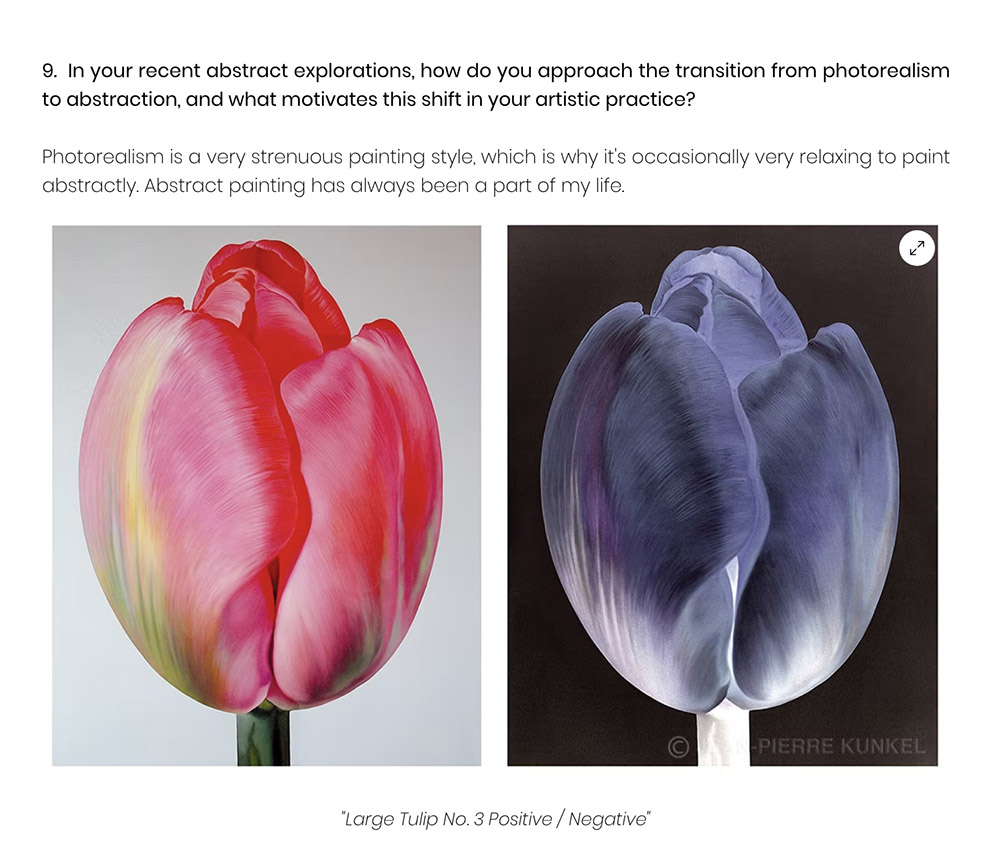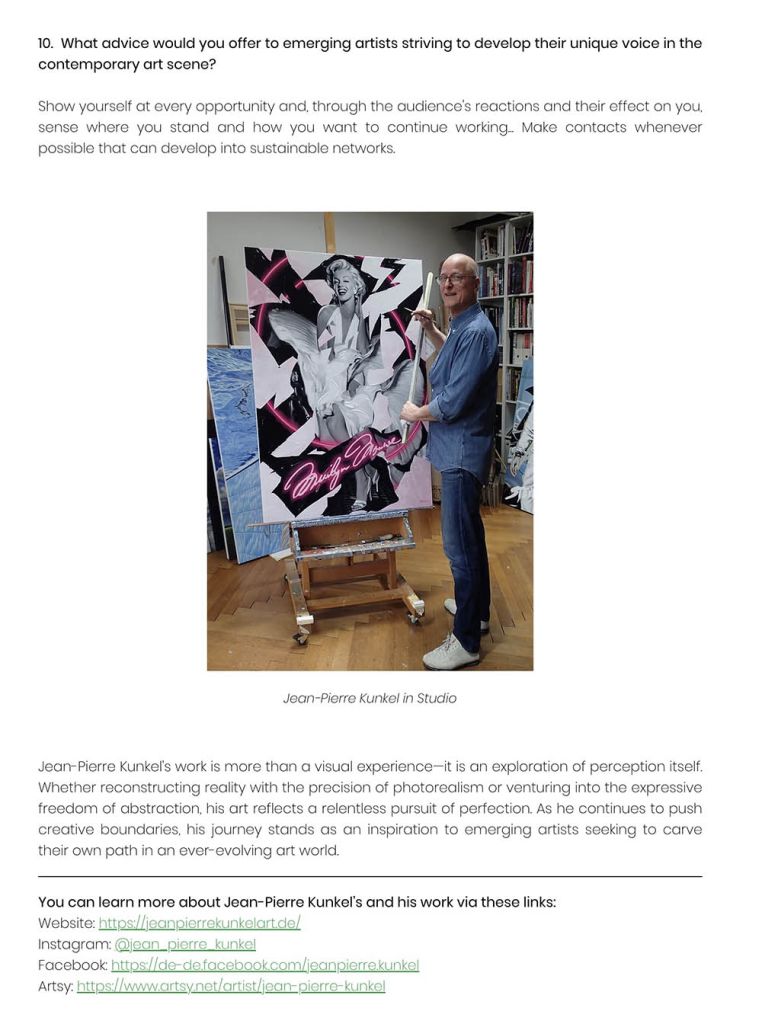Inside the Studio: Jean-Pierre Kunkel
Inside the Studio: Jean-Pierre Kunkel
Inside the Studio: Jean-Pierre Kunkel
6 days ago
Jean-Pierre Kunkel’s artistic journey is a testament to the power of transformation. From his early days in Liévin, France, to shaping the world of advertising and photorealism, his work transcends mere representation—it reimagines reality. With a mastery of light, form, and texture, Kunkel navigates seamlessly between commercial and fine art, capturing fleeting moments of beauty that defy the limitations of photography. His artistic evolution, spanning decades and mediums, continues to challenge the boundaries between realism and abstraction.
Read on to learn more in an exclusive interview with Jean-Pierre Kunkel :
- Your artistic journey began in Liévin, France, in 1950, and continued with studies at the Academy of Fine Arts in Munich and the University of Fine Arts in Hamburg. How did these early experiences shape your approach to photorealism?
I spent the first seven years of my life in Liévin, in the Pas de Calais district of France. I spoke only French when my parents and family returned to Germany in 1957. At school, I couldn’t communicate with my classmates. However, I always painted small realistic drawings that aroused the interest of the children in my class.
That was when I first noticed that my drawings were perceived positively and that I could communicate through drawing. Realizing this, my interest in realistic painting deepened. I enrolled in fine art at art schools in Munich and Hamburg. The study programs there irritated me, and I oriented myself even more toward realism. Realism gave me structure.
- In 1978, you assisted Jean-Paul Goude in Paris and New York, notably contributing to his book Jungle Fever.How did this collaboration influence your artistic development?
In 1975, I lived in Hamburg and began illustrating for advertising. In the advertising world, I met Patrick Witzig from Paris, one of the first agents for illustrators. Through Patrick Witzig, I had the opportunity to work for a while as an assistant to the famous art activist Jean-Paul Goude in New York. I assisted him in creating some images for his book Jungle Fever, the protagonist of which was his then-partner, Grace Jones.
Jean-Paul Goude developed a style for the realization of his images that he called “French Correction.” The term encompassed a combination of photography, image optimization, and illustration for the creation of his fantastical visual worlds. There, I learned his techniques and adapted Jean-Paul Goude’s working method for my career as an advertising illustrator.
“French Correction” stands for idealization, optimization, perfection, and beauty. My time as an assistant continues to shape my work today and has been carried over into the digital age.
- 3. Your work spans various techniques, including airbrush, photography, image editing, watercolor, and oil on canvas. Can you describe your creative process when starting a new piece?
The creative process is determined by the subject matter I’m currently working on. Regarding the pool and wave paintings, I prefer an oil-on-canvas execution. Beforehand, however, I photograph and review my photos. I extract image elements from the suitable photos and combine them into the optimal subject using Photoshop. The result of this composition is my template for the oil-on-canvas painting.
- Your Advertising Pop-Artseries re-contextualizes motifs from your four-decade career as an advertising illustrator. What inspired you to revisit and transform these commercial images into fine art?
I created my subjects from the Advertising Pop-Art series from the photorealistic illustrations I created during my advertising career. By composing the commercial images, I formulated new, surreal visual worlds with my own interpretations and gave the images a new meaning.
My goal was to demonstrate how much art and creativity exist even in seemingly banal images that we consume every day. Advertising is also ART.
- The ICONSseries features digitally painted works of renowned figures, printed on canvas and finished with acrylic paint. What draws you to these cultural icons, and how do you select the subjects for this series?
I was fascinated by the fact that the protagonists of my paintings from the ICONS series, which achieved fame in the 1960s and 1970s, are still worshipped today and are continually reinterpreted in the field of Pop Art, figuratively resurrected in ever-changing guises.
I was interested in examining the personalities of the icons I portrayed more closely and in exploring their literal inner turmoil and the various facets of their characters. I edited the portraits of my icons from several photographs to create the expressions that I found most characteristic, and then placed the edited individuals in a deconstructed environment.
- Your “Pool” and “Waves” series capture the interplay of light and water with photorealistic precision. What challenges and rewards do you encounter when depicting these dynamic natural elements?
Fundamentally, my work is always about beauty, idealization, optimization, and hyperreal representations that cannot be achieved through photography alone. My paintings capture fleeting moments. While preparing for the POOL and wave paintings, I photographed the breaking waves on the beach and the models for the POOL paintings underwater. The photo shoot can only be conducted in bright sunshine. Finding these ideal lighting conditions and then being ready to shoot is an absolute challenge. Since all my paintings are constructions, I can revel in light and color and indulge my need for perfection.
- Having worked as a freelance advertising illustrator and painter for over 40 years, how has the balance between commercial and fine art influenced your artistic perspective?
Commercial photorealistic illustration and photorealistic painting presented identical challenges. Without discipline, precise technique, and absolute focus, convincing and outstanding results would not have been achieved, either in the commercial sector or in art. In this respect, there was nothing to balance.
- Your work has been showcased in various exhibitions, including the Discovery Art Fair in Frankfurt. How have these exhibitions impacted your career and artistic evolution?
Whenever I exhibited at fairs, I received great interest and support for my work. I was particularly overwhelmed by the response to my exhibited works at the RED DOT Art Fair in Miami in 2024. These experiences motivated me to continue my creative path and to continually develop it further.
- In your recent abstract explorations, how do you approach the transition from photorealism to abstraction, and what motivates this shift in your artistic practice?
Photorealism is a very strenuous painting style, which is why it’s occasionally very relaxing to paint abstractly. Abstract painting has always been a part of my life.
- What advice would you offer to emerging artists striving to develop their unique voice in the contemporary art scene?
Show yourself at every opportunity and, through the audience’s reactions and their effect on you, sense where you stand and how you want to continue working… Make contacts whenever possible that can develop into sustainable networks.
Jean-Pierre Kunkel’s work is more than a visual experience—it is an exploration of perception itself. Whether reconstructing reality with the precision of photorealism or venturing into the expressive freedom of abstraction, his art reflects a relentless pursuit of perfection. As he continues to push creative boundaries, his journey stands as an inspiration to emerging artists seeking to carve their own path in an ever-evolving art world.
You can learn more about Jean-Pierre Kunkel’s and his work via these links:
Website: https://jeanpierrekunkelart.de/
Instagram: @jean_pierre_kunkel
Facebook: https://de-de.facebook.com/jeanpierre.kunkel
Artsy: https://www.artsy.net/artist/jean-pierre-kunkel
Tags:
